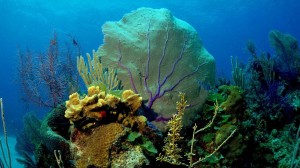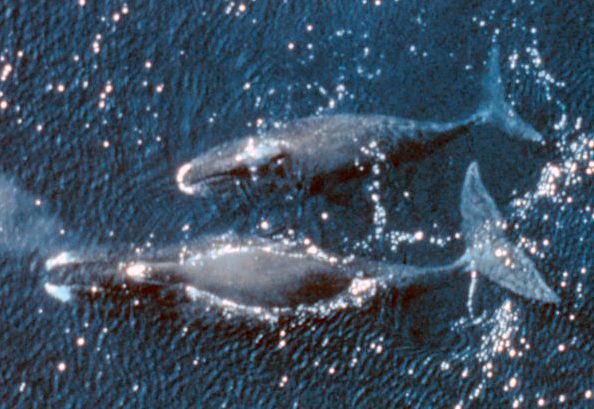Search Results for Tag: coral
Now this is old – The Top 5 of long-living creatures
1. Tuatara
Tuatara is not only a living fossil that is around since about 200 million years. The lizards are of great interest for evolutionary studies because they have some incredible features such as a photoreceptive eye (the “third eye”), or their ability to hear, although no external ears are present. Most interesting for this list is their lifespan – Tuatara can become upto 200 years old.
2. Bowhead whale
Reaching an age of 200 years is nothing if you are a Bowhead whale. The oldest ever discovered was said to be 211 years old. The whale can grow upto 20 meters in length and reach a weight of 75 to 100 tonnes. As it lives in Arctic and sub-Arctic waters it‘s also known as Arctic whale.
3. Tortoises
Of course there are tortoises. We all know that they can become very old. They are actually considered to be the longest living vertebrates on Earth. But there are examples that scores off all the others. Harriet, a Galápagos tortoise died of heart failure at the age of 175 years in 2006. It was on the boat with Charles Darwin during his epic voyage. But maybe there‘s another record: An Aldabra giant tortoise named Adwaita is said to be died an age of 250, also in 2006.
4. Black coral
We stay in the water for a 4th example of extremly long-living creatures. Deep down in the ocean we will find Black corals. These tree-like corals with a almost black skeleton normally occur in the tropics. Now hold your heads: In 2009 scientists released research-results on those corals. And they said that they discovered specimens of the Black coral that reached an age of around 4,265 years. One reason is that these corals grow very very slow.
5. Creosote bush
That brings us to the king of long-lasting species. It‘s a bush ring in the Mojave Desert and it has it‘s kingness written in it‘s name: King Clone, a Creosote bush ring is estimated to be 11,700 years old. That‘s like wow. Who will beat that? The battle is going on for… some other millennia.
Waste disposal morphs to animals’ habitat
Once upon a time it was called illegal waste disposal when people threw old tires, blocks of concrete or other not-anymore-used things into the sea. Today, something like this is declared as measure to save coastlines and increase biodiversity.
“Bioblocks” for example – not at all green, as the name might suggest – are big blocks of grey concrete with holes and channels. This new idea of an Irish team is to protect the Irish coastline, but can well be adopted for other places.
From grey to green
The blocks shall prevent erosion as well as weaken smashing waves and at the same time provide habitat to colonizing sea animals, thereby even increasing the shore’s biodiversity.
Another “invention”: Columns of concrete to plant corals on it. After a tsunami, they where almost all gone. Now humans try to bring them back – coral by coral set upon that concrete columns. Sounds weird? Have a look youself:
What do you think: Great idea or won’t work anyway? Do you have any experiences with such measures around your place?
Into the sea, you and me – Biodiversity Day 2012 focuses on marine life
 What’s going on under the surface of the sea? That’s what this years International Day for Biological Diversity, or the Biodiversity Day, is about. So the question today is: “How Much Life Is in the Sea?” Over the last decade scientists from around the world tryed to answer that question. The project was huge! The effort involved 2,700 scientists from over 80 nations, who participated in 540 expeditions around the world. They studied seawater and probed the deepest, darkest depths of the ocean, they sailed tropical seas and explored the arctic ice. And the scientists were successfull – after the trip they added 1,200 species to the known roster of life in the sea. And there’s no end to it in sight; scientists are still working through another 5,000 specimens to determine whether they are also newly-discovered species. You ask for the number of known marine species? Well, of course it’s increased to now around 250,000. In its final report, the Census team suggested it could be at least a million. Some think the figure could be twice as high.
What’s going on under the surface of the sea? That’s what this years International Day for Biological Diversity, or the Biodiversity Day, is about. So the question today is: “How Much Life Is in the Sea?” Over the last decade scientists from around the world tryed to answer that question. The project was huge! The effort involved 2,700 scientists from over 80 nations, who participated in 540 expeditions around the world. They studied seawater and probed the deepest, darkest depths of the ocean, they sailed tropical seas and explored the arctic ice. And the scientists were successfull – after the trip they added 1,200 species to the known roster of life in the sea. And there’s no end to it in sight; scientists are still working through another 5,000 specimens to determine whether they are also newly-discovered species. You ask for the number of known marine species? Well, of course it’s increased to now around 250,000. In its final report, the Census team suggested it could be at least a million. Some think the figure could be twice as high.
Dire Straits for Coral Reefs
It's no secret that coral reefs around the world are under threat because of climate change. Coral reefs represent some of our most important natural resources, providing livelihood, food and protection for marine biodiversity. And now environmentalists say 75% of our existing coral reefs are in the danger zone.
According to a report called "Reefs at Risk Revisited," overfishing, warmer waters and pollution are among the biggest culprits endangering reefs today. Also, pwards of 500 million depend on reefs for sustenance and income. And it's only going to get worse in the next 20 to 50 years.
So what can we do? Cutting down on water consumption and pollution will in turn slash our CO2 emissions, which is a big plus. But also support reef-friendly businesses whether you're fishing, boating or snorkeling! And raising awareness is also key. Here's one way to spread the word: send coral reef e-cards from The Nature Conservancy!









Feedback